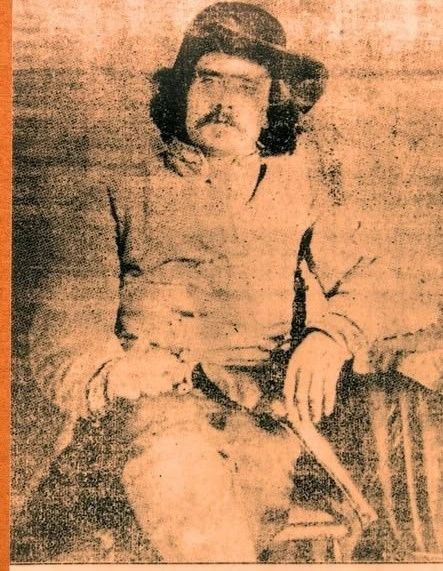
William Hardin Davison (1839–1865)
William (Bloody Bill) H. Davison

Confederate Guerilla Leader
William Hardin Davison (1839–1865)
Early Life
William Hardin Davison was born on November 8, 1839, in Hawesville, Hancock County, Kentucky, the son of Dr. Hardin Aurelius Davison and Jane Stark Dupuy Davison. He grew up in a family marked by both prominence and tragedy—several of his brothers died violently, and his father himself met a dramatic end in a bomb explosion. These turbulent family circumstances foreshadowed the violent course of William’s own life.
Civil War Service: Union Beginnings
When the Civil War broke out in 1861, Davison enlisted in the Union Army as a captain in the 17th Kentucky Infantry, a regiment composed largely of men from Hancock and surrounding counties. He distinguished himself at the Battle of Fort Donelson and the Battle of Shiloh, earning citations for bravery. At this stage, he was regarded as a courageous and capable officer.
Turning Point: Emancipation Proclamation
The defining moment of Davison’s career came in 1863, when President Abraham Lincoln issued the Emancipation Proclamation. Davison, who opposed fighting to free enslaved people, resigned his Union commission. This decision marked his radical transformation from decorated Union officer to Confederate sympathizer and outlaw.
Confederate Guerrilla Leader
By late 1864, Davison had organized a guerrilla band known as “Davison’s Hyenas” or “Guerrilla Bill’s Rangers.” Operating across western Kentucky, his men carried out raids, robberies, and acts of terror. Among their most infamous exploits were:
- December 23, 1864: Capture of the Union steamboat Morning Star.
- January 4, 1865: Burning of the Daviess County Courthouse in Owensboro.
His notoriety grew quickly. Newspapers branded him “the bloody-handed Davison,” and a $5,000 bounty was placed on his head. He was described as ruthless, with accounts of mutilations, robberies, and killings attributed to his band.
Final Days and Death
Davison’s guerrilla campaign ended in February 1865, when he was critically wounded during a firefight with Union Home Guard near Patesville, Kentucky. He lingered for several weeks before dying on March 7, 1865, at age 25, in Bomer Woods near Jeffrey’s Cliff. Because of lingering hostility in the county, his body was initially buried in a secret location. In the 1880s, his remains were reinterred in Memorial Gardens Cemetery in Hawesville.
Legacy
William Hardin Davison’s life illustrates the deep divisions of Kentucky during the Civil War. Once honored for bravery in the Union ranks, he became infamous as a Confederate guerrilla whose violent acts left a lasting mark on the region. His story is remembered locally through historical markers and family lore, embodying both the valor and brutality that the war unleashed.
This website uses cookies.
We use cookies to analyze website traffic and optimize your website experience. By accepting our use of cookies, your data will be aggregated with all other user data.